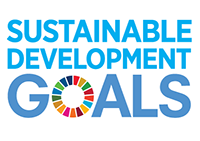Psychiatrists Per 100,000 Population
Definition:
Number of all psychiatrists per 100,000 population
Methods and Limitations:
Scott’s Medical Database (SMDB) provides information on the number of physicians and their distribution across Canada. It also contains demographic, education and migration information.
Because physicians can be uniquely identified in this database, changes in physician type as well as physician movement among provinces and territories can be tracked over time.
Find out more about physicians, or explore Physicians in Canada, which contains the most up-to-date information on physicians in Canada.
CIHI purchases raw data annually from Scott’s Directories, owned by iMD Health Global Corp. Scott’s Directories collects data from a number of organizations and institutions, such as
- Jurisdictional registrars
- Medical schools
- The Royal College of Physicians and Surgeons of Canada
- The College of Family Physicians of Canada
Excludes physicians who requested that their information not be published as of December 31 of the reference year
In 2019, Statistics Canada recalculated health region populations back to 2006 based on the 2016 Census. It is not recommended to use 2 different censuses to show population trends at the health region level; therefore, physician-to–100,000 population ratio by health region is no longer populated for the years 2001 to 2005 (when the 2006 Census was used).
Population estimates for health regions are as of July 1 of the reference year (except for Health PEI), and population estimates for jurisdictions and Canada are as of December 31 of the reference year. Population estimates for both P.E.I. and Health PEI are as of December 31 of the given year.
Source(s):

 Psychiatrists Per 100,000 Population in the Sustainable Development Goals
Psychiatrists Per 100,000 Population in the Sustainable Development Goals
Click on the SDG to reveal more information
3. Ensure healthy lives and promote well-being for all at all ages
Ensuring healthy lives and promoting the well-being for all at all ages is essential to sustainable development. Significant strides have been made in increasing life expectancy and reducing some of the common killers associated with child and maternal mortality. Major progress has been made on increasing access to clean water and sanitation, reducing malaria, tuberculosis, polio and the spread of HIV/AIDS. However, many more efforts are needed to fully eradicate a wide range of diseases and address many different persistent and emerging health issues.

